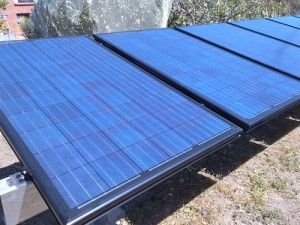Adelaide’s mortgage belt is leading the way when it comes to using the government’s solar tariff scheme.
Despite the generous 44c a kilowatt hour for electricity fed back into the grid – a figure that has led to some householders no longer paying power bills – only few of the 76 000 consumers who reached ETSA approval are from the inner suburbs.
Morphett Vale (573), Mt Barker (419) and Victor Harbor (407) are leading regions for solar uptake. Burnside (48), St Peters (79) and Unley (87) have relatively few installations, despite being home to some of Adelaide’s wealthier residents.
Clean Energy Council policy director Russell Marsh said solar installation cost had come down significantly in the past three years, prompting more take-up from middle income earners.
“Most people would be expecting it would be the higher incomes installing solar,” Mr Marsh said.
“But in a lot of cases the biggest uptake is actually in regional and rural suburbs in South Australia.
“It is not the cashed-up members of the latte set, it is much more out in the suburbs, because those people on lower incomes actually have the most to gain from installing solar in terms of protecting themselves against electricity price rises.”
Last week it was revealed that household electricity bills for those without solar panels would rise an average $42 from next year to cover the cost of the scheme, which ETSA estimated would amount to $1.2 billion over 20 years.
This prompted concerns low-income families were subsidising bills of the rich, but Energy Minister Michael O’Brien said this was not the case.
“It is real mortgage belt take-up and ironically a high degree of subsidy from our more affluent suburbs because they haven’t had to worry about their electricity bills,” he said.
Mr O’Brien said subsidy schemes, such as the State Government’s, had allowed substantial research into solar technology.
“There are probably some consequences for households that don’t have the panels, but I believe that within four to six years those households will be in a position where they will be able to put the panels on their roofs at a very, very low price,” he said.
